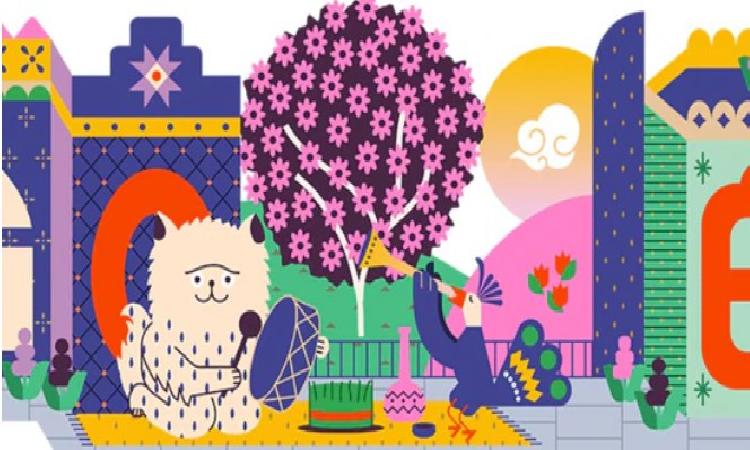

The Persian New Year, or "International Nowruz Day 2024," is a historic Iranian holiday observed on the vernal equinox, which marks the arrival of spring. On Tuesday, Google Doodled this holiday. In Persian, "Nowruz" signifies "new day".
This Doodle was made by Pendar Yousefi, an Iranian guest artist. The artist aimed to bring back his "pleasant memories of Nowruz from his childhood." On Monday, the Doodle featured a group of animal companions celebrating the arrival of spring beneath a blooming tree in a courtyard full of flowers.
According to Google Doodle's description of the Persian holiday, it's a vibrant springtime celebration that encourages balance between life and environment, peace, respect, and kinship.
Google Doodles are quick, temporary updates to the Google logo that honor national and international occasions, holidays, significant anniversaries, and well-known figures who have influenced society.
These changes can be made to photos, animations, slideshows, movies, and games, among other media, to provide consumers with a range of engaging and interactive experiences.
Here's all you need to know about the Persian New Year
• The yearly celebration of Nowruz has a history that dates back more than 3,000 years, with its origins in Persia, the ancient Iranian region. First noticed around the spring equinox, it marked the beginning of the flowering season.
• The event is held on or around March 21, the date of the astronomical vernal equinox, which marks the beginning of spring. It is an important cultural occasion that brings together various populations from different nations and areas.
• In 2016, Nowruz received formal recognition as a component of the Intangible Cultural Heritage of Humanity, Representative List.
• Celebrated by over 300 million people worldwide, it is observed in a number of regions, such as the Middle East, Central Asia, the Balkans, the Black Sea Basin, and the Caucasus, according to the United Nations.
• During this time, gathering around "the Table," which was adorned with objects that symbolized affluence, life, and purity, was a common custom. To celebrate a special meal with their loved ones, families get together.
• The haft-sin custom, in which families arrange seven symbolic objects representing rebirth and vitality, at the center of the Nowruz celebrations.
• These ingredients usually represent new beginnings; wheat for beauty; vinegar for maturity; berries for the dawn; olives for attachment; apples for health; and garlic for health.
• Gift-giving is customary, especially with kids, and frequently involves handcrafted items. Apart from that, the celebrations include street shows, customary music and dance, group ceremonies with fire and water, customary sports, and handicraft making.